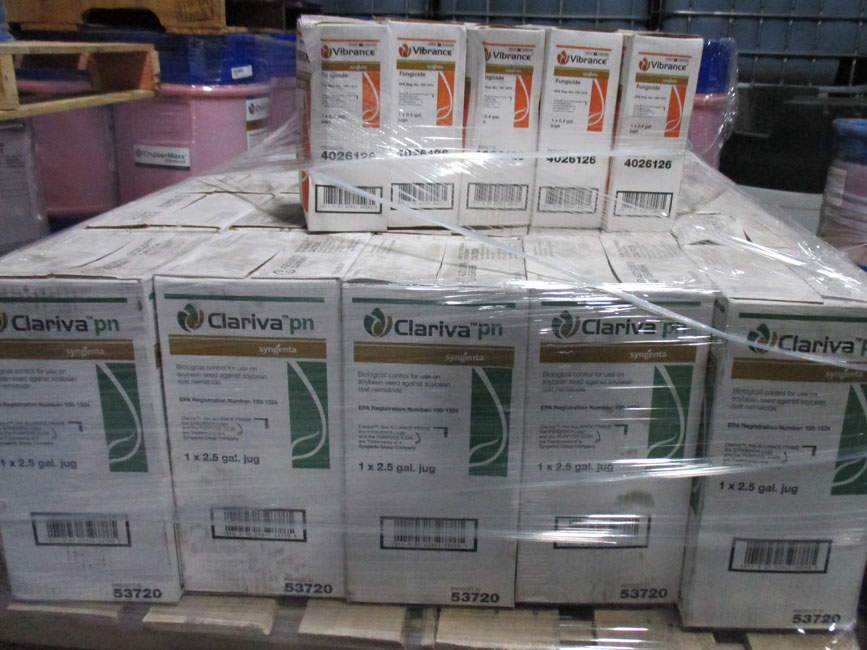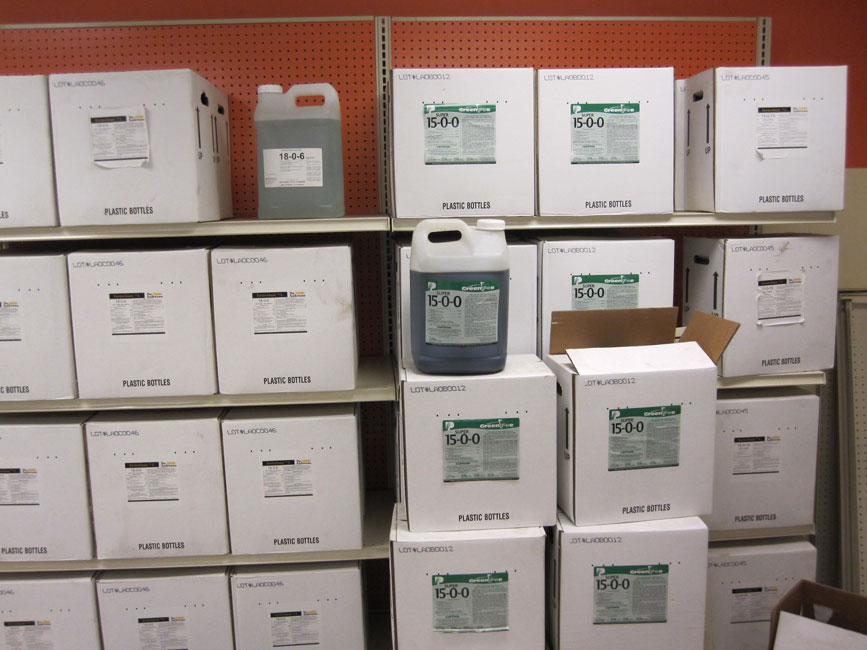
“Small package pesticide” means an amount of liquid or dry pesticide that is held in an individual container with a content of 55 U.S. gallons or less, or 99 lbs. or less dry weight (Minnesota Pesticide Storage Rules).
Small packaged pesticide and fertilizer storage does not require a bulk storage permit but do have certain storage and handling requirements that must be met.
The Federal Insecticide, Fungicide and Rodenticide Act (FIFRA) and the Minnesota Pesticide Law require pesticides to be properly labeled. The label contains instructions on proper use, storage and disposal, protective clothing, rates of application, etc.
According to Minnesota law (Minnesota Statues, CH. 18B.07, Subd. 4) a person may not allow a pesticide, rinsate, or unrinsed pesticide container to be stored, kept, or to remain in or on any site without safeguards adequate to prevent an incident.
Minnesota Department of Agriculture (MDA) provides guidelines on small package facility storage requirements for pesticides and fertilizers.
Minnesota Department of Agriculture (MDA) and Minnesota Department of Labor and Industry (DLI) regulations require the use of a backflow prevention device or fixed air gap when filling fertilizer or pesticide application equipment from a municipal water supply, private well, or surface water. The MDA and the DLI have developed backflow prevention guidelines for ag chem facilities.

Spills – Incident Clean Up
All spills of any pesticide or fertilizer must be immediately reported to the Minnesota Duty Officer at 1-800-422-0798 (greater MN) or 651-649-5451 (metro).
Load Area Recommendation
Use a load area when mixing and loading small package pesticides and impregnated fertilizers into application equipment. A load area should be liquid tight, curbed, and sloped so it contains any spills that may occur.

